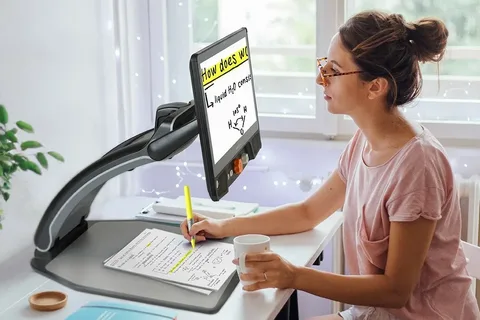Low Vision Aids: Empowering Daily Life with Assistive Devices

Low vision is a condition that affects millions of people worldwide, significantly impacting their ability to perform everyday tasks. For individuals living with vision impairment, maintaining independence and managing daily routines can be challenging. Fortunately, low vision aids provide innovative solutions to bridge this gap. These tools are designed to enhance remaining vision, allowing users to navigate their lives with greater ease and confidence. In this article, we’ll explore the types, benefits, and key considerations of low vision aids and how they can improve quality of life.
What Are Low Vision Aids?
Low vision aids are specialized tools and technologies created to help individuals whose vision cannot be fully corrected by standard eyeglasses, contact lenses, surgery, or medical treatments. These devices work by enhancing the user’s remaining vision, making it easier to perform tasks such as reading, writing, and navigating unfamiliar spaces. Unlike conventional corrective lenses, which address refractive errors, low vision aids are tailored to accommodate the unique needs of people with significant vision loss, providing solutions that improve clarity and accessibility.
Types of Low Vision Aids
Magnifiers
Magnifiers are among the most versatile and commonly used low vision aids. They come in various types, each suited to specific needs:
- Handheld Magnifiers: Portable tools perfect for quick tasks like reading product labels or menus. They are lightweight and easy to carry, making them ideal for on-the-go use.
- Stand Magnifiers: Designed for hands-free use, stand magnifiers are perfect for reading books or performing crafts, as they rest securely on a flat surface.
- Electronic Magnifiers: Digital devices that allow users to adjust magnification levels and contrast settings, providing high clarity and flexibility for reading and other detailed activities.
- Wearable Magnifiers: Worn like glasses, these devices offer continuous magnification for tasks that require prolonged focus, such as sewing or writing.
Electronic Low Vision Devices
Technological advancements have introduced a range of electronic tools to support individuals with low vision:
- Screen Readers: Software that converts on-screen text into speech, making digital content accessible for those with visual impairments.
- Digital Magnifiers: Devices that project magnified images or text onto a screen, with options to enhance color contrast for improved readability.
- Text-to-Speech Devices: Tools that scan printed material and read it aloud, helping users engage with books, newspapers, and other physical texts.
Mobility and Navigation Aids
Low vision aids are not limited to reading and close-up tasks; many devices are designed to enhance mobility and spatial awareness:
- Electronic Travel Aids: These use vibrations or sound waves to detect obstacles and guide users safely.
- Tactile Maps: Physical maps with raised markings that help individuals understand spatial layouts and navigate unfamiliar spaces.
- Navigation Apps: Smartphone applications with GPS capabilities provide auditory guidance, empowering users to travel independently and confidently.
Choosing the Right Low Vision Aid
Selecting the right low vision aid is crucial to ensuring it meets the user’s unique needs. Here are some important factors to consider:
- Type of Vision Loss: Determine whether the impairment affects near, far, or central vision. This helps in identifying the most appropriate device.
- Intended Use: Define the purpose of the aid, whether for reading, writing, mobility, or other activities.
- Portability: Consider whether a portable device or a stationary one better suits the user’s lifestyle.
- Ease of Use: Choose a device that aligns with the user’s comfort and technical proficiency, especially for older individuals.
- Budget: Compare options to find a device that fits within financial constraints without compromising on quality.
Consulting a low vision specialist is highly recommended. These professionals can assess the user’s needs and recommend the best solutions through personalized evaluations and trials.
Benefits of Low Vision Aids
Enhancing Independence
Low vision aids empower users to perform tasks independently, reducing reliance on others for daily activities. For instance, handheld magnifiers can help with reading medication labels, while navigation apps can assist in traveling to appointments or social gatherings.
Improving Quality of Life
The ability to manage everyday tasks without assistance boosts self-esteem and confidence. Low vision aids also open doors to hobbies, education, and professional opportunities that may have seemed unattainable otherwise.








